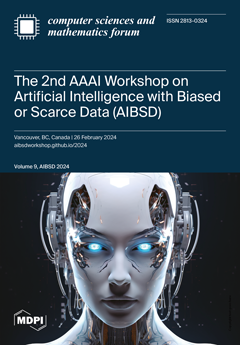Comput. Sci. Math. Forum, 2024, AIBSD 2024
The 2nd AAAI Workshop on Artificial Intelligence with Biased or Scarce Data (AIBSD)
Vancouver, BC, Canada | 26 February 2024
Volume Editors:
Kuan-Chuan Peng, Mitsubishi Electric Research Laboratories (MERL), USA
Abhishek Aich, NEC Laboratories, USA
Ziyan Wu, United Imaging Intelligence, USA
- Issues are regarded as officially published after their release is announced to the table of contents alert mailing list.
- You may sign up for e-mail alerts to receive table of contents of newly released issues.
- PDF is the official format for papers published in both, html and pdf forms. To view the papers in pdf format, click on the "PDF Full-text" link, and use the free Adobe Reader to open them.



